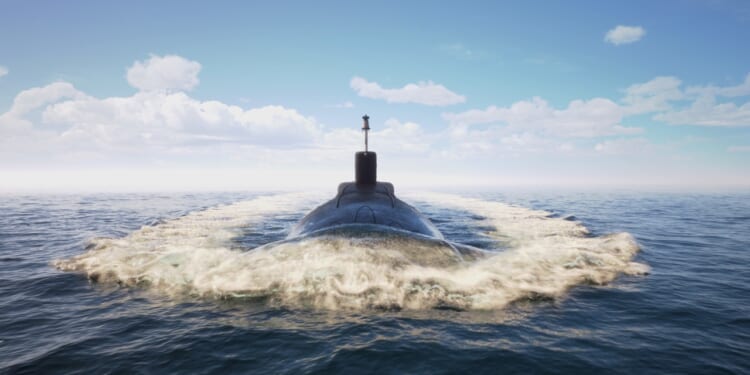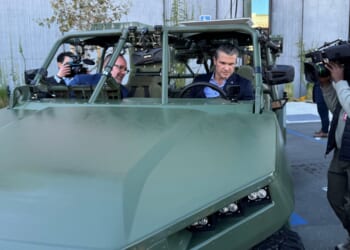Russia’s buildup on the Kola Peninsula may simply be a question of repositioning its forces from the Mediterranean following the fall of the Assad regime in Syria.
Russia continues flexing its muscles in the Arctic region and using it as a conduit to project power against NATO to indicate its displeasure at NATO’s response to the ongoing Ukraine War. Specifically, the Russians have been expanding their naval presence on the Kola Peninsula, which sits adjacent to the Arctic/Barents-Sea region. Home to Russia’s famed Northern Fleet, the Kola Peninsula is the unofficial capital of Russia’s nuclear submarine forces.
Much as China has done in the South China Sea (SCS), the Russians have implemented a robust anti-access/area-denial (A2/AD) approach to defending the peninsula. They are most interested in projecting power from—and defending—their submarine pens at Gadzhiyevo and the support base at Okolnaya Base.
What’s Russia Doing in the Arctic?
But the key to understanding why Russia is suddenly expanding its footprint here is, just as with the Ukraine War, in response to its perception that NATO is provoking them in that region. Remember, both Finland and Sweden are recent additions to the already oversized NATO alliance, which Moscow views with suspicion.
Norway’s press is particularly focused on Russia’s nuclear weapons and submarine buildup on the Kola Peninsula. Yet it also highlights the newer types of ice-capable ships that are entering Russia’s service in this area. These icebreakers enhance Russia’s ability to deploy—and dominate—in the Arctic. One report from Russia indicates that Moscow has moved around 50 storage bunkers for submarine-launched ballistic missiles (SLBMs) to be built at their base on the Kola Peninsula.
While there are clear signals being sent by Moscow to Europe about NATO’s unwanted activities in the northern frontier of Europe, the buildup is part of Moscow’s larger Arctic domination strategy. Indeed, the Kremlin’s updated Arctic naval strategy demands that the Northern Fleet become the dominant element in the High North.
In the last year alone, Russian naval drills in the Arctic have increased to record levels since the end of the Cold War. These exercises have included anti-submarine warfare, long-range strikes, and operations in ice-covered waters to hone the skills of the Russian Navy in the High North. European sources—who have been overly twitchy since the start of the Ukraine War—continue overreacting by claiming this is all part of a larger preparation by Moscow to initiate a war against Northern Europe.
Russia’s Arctic Buildup Is Here to Stay
A much more sober assessment from the Scandinavian Journal of Military Studies argues that because Russia’s position in the Mediterranean is floundering in the wake of Bashar al-Assad’s overthrow last year, the Russian Navy is merely repositioning its assets out in the Mediterranean to the Arctic.
The Kola Peninsula is key for Russia’s strategic nuclear triad because it provides sea-based nuclear deterrence via submarines positioned with the Northern Fleet. With Russia so heavily invested in dominating the Arctic, the Kola Peninsula is a geostrategic gateway to the region. Plus, the buildup indicates Russia’s intention to project buildup into the Greenland-Iceland-UK (GIUK) gap.
Whatever is happening, Russia is clearly poised to expand their presence in the High North. This is not only happening because Russia has such a long border with the Arctic region. It is occurring because NATO again expanded, this time in Northern Europe, and Moscow wants to make it clear that that expansion is most unwelcome. Before the expansion occurred, Russia’s presence there since the Cold War was much smaller than it is today (or will be tomorrow).
The race for the High North is one of the most underreported and little understood geopolitical stories of our day. Let’s hope Washington realizes what’s going on before it’s too late.
About the Author: Brandon J. Weichert
Brandon J. Weichert is a senior national security editor at The National Interest. Recently, Weichert became the host of The National Security Hour on America Outloud News and iHeartRadio, where he discusses national security policy every Wednesday at 8pm Eastern. He is also a contributor at Popular Mechanics and has consulted regularly with various government institutions and private organizations on geopolitical issues. Weichert’s writings have appeared in multiple publications, including The Washington Times, National Review, The American Spectator, MSN, The Asia Times, and others. His books include Winning Space: How America Remains a Superpower, Biohacked: China’s Race to Control Life, and The Shadow War: Iran’s Quest for Supremacy. His newest book, A Disaster of Our Own Making: How the West Lost Ukraine is available for purchase wherever books are sold. He can be followed via Twitter @WeTheBrandon.
Image: Shutterstock / Alexyz3d.


















